It’s not difficult to eat healthily. Let me type that again in case you missed it: It’s not difficult to eat healthily, though if you believed the government, food industry and ordinary people, you’d think it was the most confusing thing in the world.
The rule for doing so is a balanced diet with everything in moderation – no faddy diets, nothing complicated at all. Just remember to eat plenty of fresh fruit and veg, keep up your carbs and a little fresh protein (lean meats and fish), eat little and often but restrict your treats and fatty snacks, then do lots of exercise. You’ll get all the nutrients you need without the need for supplements, Slim-fast milkshakes or anything else.
Simples! Or is it? Just one proviso: eating what are statistically low fat foods is not the same as eating healthily.
The main issue is that the industry wants to sell you instant solutions, a lot of which are low-fat low-cal convenience dishes or foods of one sort or another, which in some cases gives the consumer a feeling of being morally virtuous and therefore negates the need for any personal discipline or behavioural changes. The food labelled as “healthy eating” in supermarkets worries me greatly. It’s often pumped full of water and filled with chemicals to replace or reduce the natural ingredients you would want to eat. It might look vaguely like a tasty product but what we’re talking about is deeply processed, and lacking entirely in flavour other than through additives that make it undesirable in the extreme.
To my mind, processed food negates the benefits of good, tasty diet from fresh, local, organic ingredients – which is the best way to a healthier diet. I would sooner eat less of a good quality food than substitute low-fat and additive-rich equivalents – and if I eat everything in proportion my diet will not only be healthier but I can and will lose weight just as effectively as I would have done with the substitutes. Some people don’t believe that, though I did lose 3 stones in 3 months with that philosophy.
Then again, we are bombarded from every side with “good advice” about what, how and when to eat, much of it conflicting and nutritionally questionable – including some of the diets that often result in weight going off and back on again in rapid succession. If ever there was a topic overrun by old wive’s tales, this is it. But people believe what they want to believe and what makes them feel comfortable.
One example. My mother has for donkey’s years eaten one huge meal a day, generally around 5pm, and never touches anything for breakfast. She says it’s done her no harm and kept her healthy, though she is thin as a rake, very arthritic, sometimes lacking in energy (low blood sugar?) and has been an insomniac for as long as I can remember.
How much of that is due to her diet I don’t know, but one old wive’s tale I believe to be true and an excellent maxim for living is this one: BREAKFAST LIKE A KING, LUNCH LIKE A PRINCE, DINE LIKE A PAUPER. To emphasise this point, here is a blog by Michael van Straten:
This ancient proverb has more than a grain of truth in it, but sadly, most people leading today’s busy lives skip breakfast altogether. This is really bad news as ideally you should be getting 25 percent of your day’s calories from breakfast, enough to keep you going right through till lunchtime, both physically and mentally. Starting the day without refuelling your body’s engine means poor concentration, irritability, low blood sugar and a dreadful craving for the biscuit tin or chocolate bar in the middle of the morning.
Five million people don’t bother to eat breakfast at home but grab a snack while dashing to work. They consume one and a half million bacon sandwiches, over a million packets of crisps, and three-quarters of a million ham sandwiches and more than a million sugary soft drinks. But worse still, half the working population skip breakfast altogether and another half a million grab a bag of sweets or bar of chocolate on their way.
Breakfast is exactly what it says, breaking your fast, and for most people the time they spend in bed is the longest period they go without food. When you get up in the morning it may easily be 8 – 12 hours since you last ate and your blood sugar level is at rock bottom. In order for your brain to function properly it needs a constant supply of sugar which is why starting your day with breakfast is so important. Skipping breakfast means poorer performance by schoolchildren, a greater risk of accidents when driving, and a lack of efficiency and concentration at work.
And just to prove the point, a study published last year showed that people who ate breakfast were definitely happier than those who didn’t.
Very few of my patients ever admit to having the great British fry-up breakfast, in fact hardly anybody admits to it, so why do so many cafes all over the country and in all our favourite British sunshine holiday hotspots have signs outside saying ‘English breakfast served all day’. Even the residents of Albert Square are in and out of the café for their fry-up in every episode! Of course, almost everyone loves it, but feels too guilty to admit it. But don’t worry, here’s how to do the healthy version, and believe me, it tastes just as good.
Start with the mushrooms, tomatoes and egg. Bring a pan half full of water to the boil, turn it down to a simmer, put in one large tomato and 2 oz mushrooms, whole if small and sliced if
large. Put a large plate on top of the simmering saucepan. When the plate is really hot break an egg on to it and let it cook – a great trick taught to me by Anton Mosimann. By the time the egg’s ready you can strain the mushrooms and tomato straight on to the hot plate.
If you’re seriously interested in healthy cooking you’ll have a good quality heavy griddle pan, if not now’s the time to get one. These are like a large frying pan with raised ridges on the bottom and I find the rectangular ones a much more convenient shape. You need no fat at all and any fat in whatever you’re cooking runs off into the hollows between the ridges.
While your water is coming to the boil heat the griddle pan and put in the sausage. When it’s brown all over, add the rasher of bacon with excess fat removed, and the black pudding. If you really must have fried bread rather than toast, put 18 oz of water and 2 oz of rapeseed oil (the healthiest oil to cook in and available in supermarkets) into an indoor plant sprayer. Shake vigorously then spray very sparingly onto a small frying pan to cook the fried bread. If you’ve timed it right everything else will be ready by the time the egg is cooked, remove the plate from the saucepan, wipe the underneath with a teacloth, strain the mushrooms and tomatoes and add the sausage, bacon, black pudding and fried bread. It might take a little longer but you’re saving almost 500 calories and 50 grams of fat. That’s about a quarter of the average daily calorie requirement for women and approaching a total day’s fat consumption. And you can still enjoy the great British breakfast.
HOW THEY STACK UP
Just look at the figures and see how the traditional fry-up compares to my healthy version.Traditional breakfast:
- Fried egg
- Fried back bacon
- Pork sausage fried
- Black pudding fried
- Tomatoes fried
- Mushrooms fried
- Slice bread fried
- Totals 68.1 g fat, 877 calories
Healthy breakfast:
- Egg on a plate
- Bacon griddled
- Sausage griddled
- Black pudding griddled
- Tomatoes poached
- Mushrooms poached
- Slice bread spray-fried
- Totals 18.93 g fat, 391 calories
Protein in the morning is real energy and brain activity food whereas a mainly starch based breakfast keeps you calm, serene and happy. So what you eat depends on your needs for that particular morning. If you need to be alert, mentally active and sharp, then kick start your day with a real indulgence of scrambled eggs and smoked salmon. Scramble two organic free range eggs – they’ll be a wonderful colour and richer in nutrients – in a little butter but no milk. Once they start setting simply add two dessertspoons of chopped oak smoked salmon. You can often buy leftover bits from a whole side at less than half price if you go to a delicatessen or packs of trimmings in the supermarket. Although smoked salmon does contain some salt, the combination of protein and essential fatty acids is real high power brainfood. Serve with lots of black pepper and crunchy wholemeal toast for 330 calories and 25 g fat, some of which is the healthiest variety. Kick off with a glass of orange juice or a fresh kiwi for a day’s dose of vitamin C and you’ll be fit for anything.
All of the complex carbohydrates encourage the production of calming chemicals in the brain. So if you’re facing a stressful morning or you just want to feel at peace with the world and happy, then oats are your best bet. A large bowl of freshly made porridge using half water and half semi-skimmed milk, topped off with cinnamon, a relaxing spice, some honey and a dessertspoonful of cream as a luxury treat, will give you a whole morning of slow release energy, lots of B vitamins, healthy calories, and very little fat.
Alternatively why not try muesli the traditional Swiss way. Start with one of the organic sugar free products like Jordans, before you go to bed the night before add orange or apple juice and a small carton of low fat live yogurt to a bowl of muesli and leave it covered in the fridge. In the morning add fresh fruit, especially blueberries or blackberries, a sliced banana and a little honey, and you really will have a breakfast fit for a king. Like the porridge, masses of slow release energy, bags of vitamin C and a huge helping of the cancer and heart protective chemicals from the berries. You’ll be at peace with the world. And all that for only 175 calories and 4 grams of fat.
Of course, you don’t have to eat any of the above but with a little thought and preparation you can do better than almost any ready-made meal. Fill yourself with the right foods early on in the day and you will be less hungry later, so you will eat less. QED.
The one thing that will make you feel better is to shop locally for good seasonal ingredients, always buy fresh and eat simply and sensibly. That is the only advice you will ever need on healthy eating.

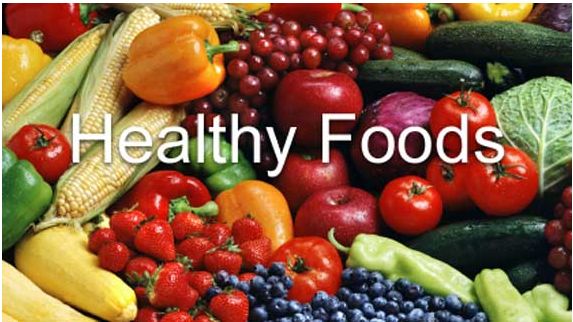

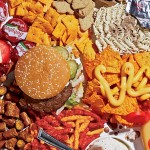
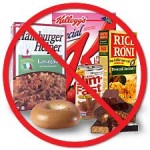


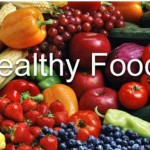
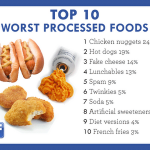
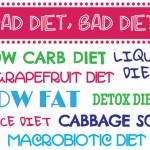
Thanks for your post on this web site. From my experience, occasionally softening upwards a photograph may possibly provide the photo shooter with an amount of an artistic flare. More often than not however, that soft blur isn’t just what exactly you had in mind and can sometimes spoil an otherwise good photograph, especially if you anticipate enlarging this.